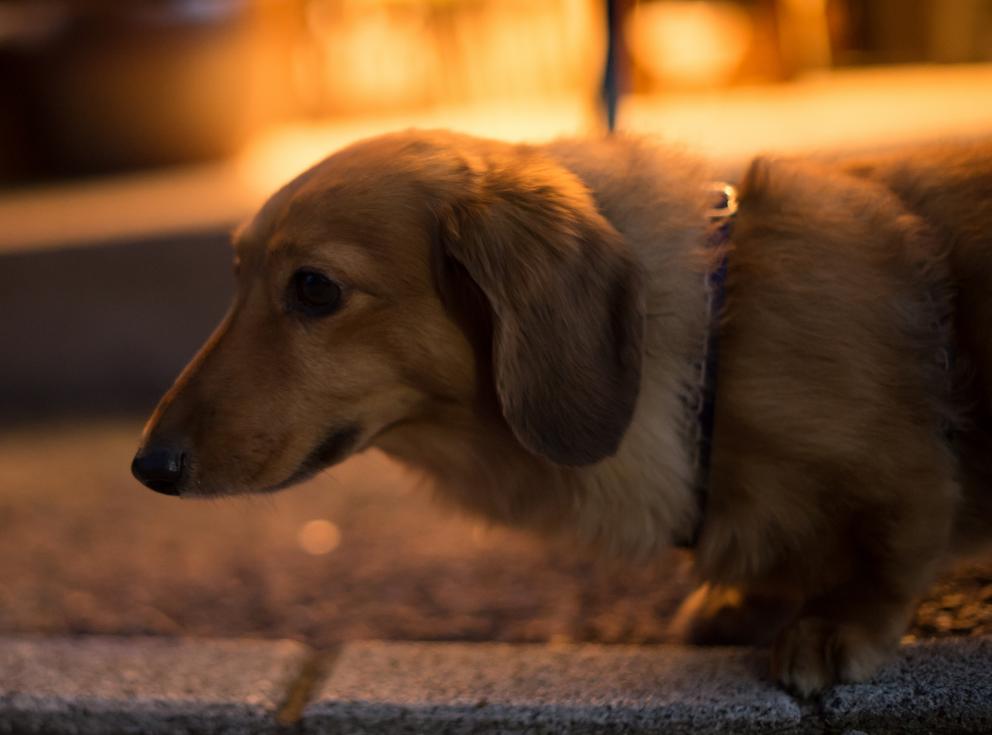You are here
Fear of Thunderstorms

Is your dog afraid of thunderstorms? Did you know a fear of thunderstorms is a surprisingly common problem among dogs?
The fear may be so strong that some dogs can anticipate when a storm will come and start shaking well before it arrives. In most cases, the fear of storms is usually related to the noise component, although the flashing light component could also be a factor. Not all dogs with noise phobias have storm phobias, but 90% of dogs with storm phobias also react to loud noises (Overall JAVMA 2001; 219(4):467-473). It is difficult to identify the triggers for the anxiety but they include wind, ozone and barometric pressure changes, lightning and rain.
To learn more about how to eliminate this phobia we encourage you to consider the following guidelines by the Canadian Veterinary Medical Association. In addition to the information in this article, your veterinary clinic will have helpful suggestions. We encourage you to talk to your vet!
Article created and published by the Canadian Veterinary Medical Association:
Fear Of Thunderstorms Extremely Difficult To Treat In Dogs
Fear of thunderstorms is a surprisingly common problem among dogs. The fear may be so strong that some dogs can anticipate when a storm will come and start shaking well before it arrives.
In most cases, the fear of storms is usually related to the noise component, although in some dogs, the combination of flashing lights and noise may play a factor. Elimination of this phobia is very time-consuming and involves several well-established training techniques.
Systematic Desensitization
To get a dog acclimatized to the thunder, one technique called "systematic desensitization" can be used. With this method, your dog is exposed to storm noises at such a low level that she will not react to them. (You can use commercial recordings of thunderstorms or record your own storm noises. Before starting, the recording should be played loudly to check to see if it will illicit a fear response from your dog).
The sound level is increased gradually over a period of time until such time as your dog experiences a fear reaction. You should not comfort your pet at this point as this will only serve to reinforce the fear behaviour. Instead, reduce the sound level and continue the training process but at a more gradual rate. Over a period of time (usually weeks) the noise level is increased to such a point that your dog will no longer fear it. If your dog is also afraid of lightning, a strobe light can be used to simulate lightning.
Counterconditioning
Another technique (called "counterconditioning") can be used simultaneously during this training session. It involves distracting your dog during a mock "storm" with an easy training session (e.g. "sit", "stay", "come") and then rewarding it for obedient behaviour. This serves to replace the fear emotion with one of satisfaction and enjoyment.
If these methods fail, consult your veterinarian. He or she may advise you of some other training techniques to use, with or without the use of behaviour modification drugs or tranquilizers.
Additional considerations:
- Mask the sound of thunder with the addition of background noise - TV, radio, fans, natural white noise sound machine.
- Consider a Thundershirt® or other close fitting sweater.
- Consider ear covers or sound muting cage covers.
- Consider eye covers or room darkening shades if it is the lightning that bothers the dog.
- For mild cases, allow the dog to self-identify its safe haven. In many cases it is the basement to be further away from the noise.
